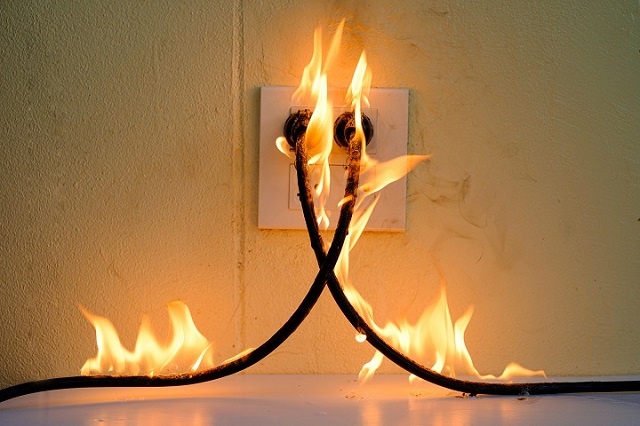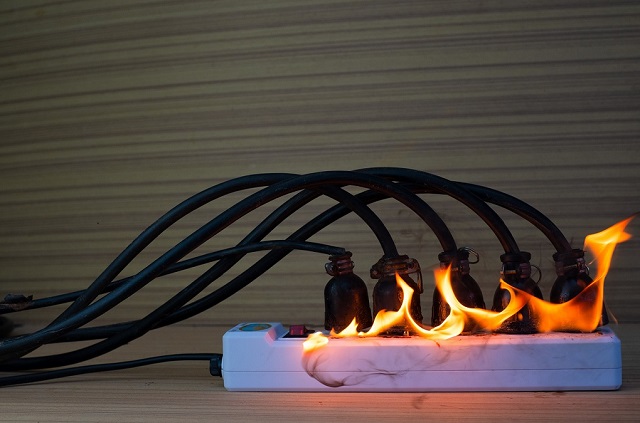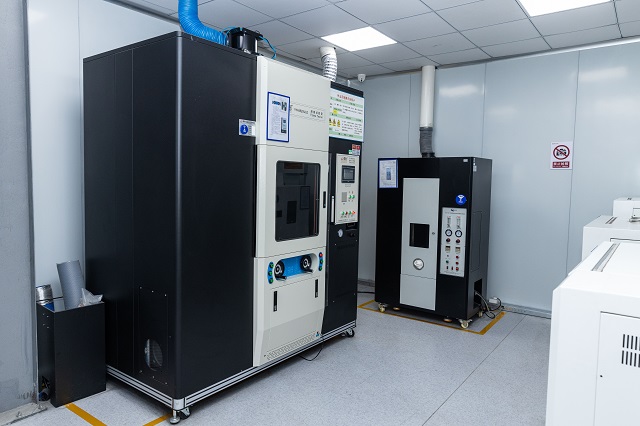I. Introduction
A. Brief explanation of the importance of fire safety in electrical applications
In the realm of electrical applications, prioritizing fire safety is of utmost importance. Fires in electrical systems can lead to devastating consequences, posing risks to life, property, and the overall functionality of critical infrastructure. As we rely heavily on electricity for various purposes, the potential for fire hazards necessitates a comprehensive understanding of fire safety measures.
This blog post aims to shed light on the significance of fire safety within electrical applications, emphasizing the need for proactive measures to prevent and manage potential fire incidents. The introduction will provide a brief overview of the inherent risks associated with electrical systems and highlight the pivotal role that fire safety considerations play in designing, implementing, and maintaining these systems. Join us as we explore the crucial connection between fire safety and electrical applications, laying the groundwork for a deeper exploration of flame-retardant and fire-resistant cables.
II. Understanding Flame Retardant and Fire Resistant Cables

A. Definition and characteristics of flame retardant cables
Flame retardant cables serve as a vital component in fire safety strategies, designed to inhibit or delay the spread of flames in the event of a fire. These cables are crafted from materials specifically chosen for their ability to resist ignition and combustion, offering a crucial line of defense against potential fire hazards.
1. Materials Used in Flame Retardant Cables: Flame retardant cables typically incorporate specialized materials such as cross-linked polyethylene (XLPE) or low-smoke, zero-halogen (LSZH) compounds. These materials are chosen for their ability to withstand the heat generated during a fire, reducing the likelihood of the cable contributing to the fire's escalation.
2. Mechanism of Slowing Down Flame Spread: The key characteristic of flame retardant cables lies in their ability to slow down the rate at which flames propagate along the cable. This is achieved through the release of flame-inhibiting gases or the formation of a protective char layer, acting as a barrier between the cable and the surrounding fire. Understanding this mechanism is crucial for assessing the effectiveness of flame retardant cables in different scenarios.
B. Definition and characteristics of fire-resistant cables
In the realm of fire safety, fire-resistant cables stand as stalwart defenders against the potential chaos unleashed by a fire. Unlike flame retardant cables, fire-resistant cables go beyond merely impeding the spread of flames; they are designed to maintain functionality even in the midst of a fire, ensuring that essential systems remain operational when needed most.
1. Materials Used in Fire-Resistant Cables: Fire-resistant cables are crafted from materials that can withstand high temperatures and continue to transmit power or signals during a fire. Common materials include mica tape, ceramic fibers, or other refractory materials that offer robust resistance to the heat generated in a fire.
2. Ability to Maintain Functionality During a Fire: The distinguishing feature of fire-resistant cables lies in their capacity to endure extreme heat and flames without compromising their functionality. This is achieved through the use of insulating materials that provide a protective barrier, preventing the cable from succumbing to the intense heat and maintaining its integrity during a fire emergency.
III. Key Factors in Choosing the Right Cable

A. Electrical industry requirements and regulations of fire-proof
As we navigate the landscape of fire safety in electrical applications, understanding the specific requirements and regulations set forth by the electrical industry becomes paramount. Compliance with these standards not only ensures the safety of individuals and property but also contributes to the overall reliability and resilience of electrical systems.
The electrical industry operates within a framework of standards and codes that dictate the specifications for fire-proof cables. Familiarity with these regulations is essential for ensuring that the selected cables meet the necessary criteria for fire safety. Common standards may include those set by organizations such as the National Fire Protection Association (NFPA) or the International Electrotechnical Commission (IEC).
B.Environmental factors
1. Temperature and Climate Considerations: Different regions experience varying temperature ranges and climate conditions. It's imperative to select cables that can withstand the prevalent temperatures in a given environment. Extreme heat or cold can affect cable materials and, consequently, their fire-resistant properties. Understanding the climate where the cables will be installed is crucial for ensuring their optimal performance over time.
2. Exposure to Chemicals or Harsh Conditions: In industrial settings or areas prone to exposure to chemicals, corrosive substances, or other harsh conditions, the choice of cables becomes even more critical. Some cables may be better suited to resist chemical degradation or environmental stressors. Assessing the potential exposure of cables to these elements is essential for determining their resilience in demanding environments.
C.Cost considerations fire-resistant
While prioritizing safety is non-negotiable, cost considerations play a significant role in decision-making processes, especially in large-scale projects or budget-constrained scenarios. Balancing the need for fire-resistant cables with budget constraints requires a thoughtful analysis of both initial investment and long-term cost implications.
Fire-resistant cables may entail a higher initial cost compared to standard cables, including flame-retardant ones. However, it's crucial to view this as an investment in long-term safety. Consider the potential costs associated with fire damage, system downtime, and potential life and property loss. The initial investment in fire-resistant cables often pales in comparison to the potential costs of a fire incident.
IV. Installation and Maintenance Considerations

A. Guidelines for proper installation of flame retardant and fire resistant cables
1. Adherence to Manufacturer Specifications: Before installation begins, it is imperative to thoroughly review and understand the manufacturer's specifications for the selected flame retardant or fire-resistant cables. These specifications outline crucial details such as recommended installation methods, bending radii, and environmental conditions for optimal performance.
2. Proper Cable Support and Management: Correct cable support and management are critical for preventing damage and maintaining the integrity of flame retardant and fire-resistant cables. Cable trays, conduits, and supports should be installed according to industry standards to prevent stress on the cables, which could compromise their fire-resistant properties.
3. Minimizing Cable Bundling and Congestion: Overcrowded cable installations can lead to increased heat generation and hamper the cables' ability to resist flames. Installers should follow best practices for cable bundling and spacing, ensuring that each cable has adequate ventilation to dissipate heat effectively.
4. Avoiding Sharp Bends and Twists: Flame retardant and fire-resistant cables should not be subjected to sharp bends or twists during installation. Such stressors can damage the cable's protective layers, diminishing its ability to withstand fire.
B.Maintenance requirements to ensure ongoing fire safety
The installation of flame retardant and fire-resistant cables sets the foundation for a secure electrical infrastructure, but ensuring ongoing fire safety requires a commitment to regular maintenance. In this section, we delve into the essential maintenance requirements that guarantee the continued effectiveness of these cables in the face of potential fire incidents.
1. Regular Inspections and Testing: Implementing a routine inspection and testing schedule is crucial for identifying any signs of wear, damage, or degradation in flame retardant and fire-resistant cables. Periodic assessments should include visual inspections, insulation resistance tests, and other relevant examinations to ensure the cables remain in optimal condition.
2. Replacement of Damaged Cables: If any damage is detected during inspections, prompt replacement of damaged cables is imperative. Even minor damage can compromise the fire-resistant properties of the cables, making it essential to address issues as soon as they arise to maintain the overall integrity of the fire safety system.
3. Environmental Monitoring: Monitoring the environmental conditions surrounding the cables is vital for preemptive maintenance. Factors such as temperature fluctuations, exposure to moisture, or chemical exposure can impact cable performance over time. Implementing sensors and monitoring systems can provide real-time data to address potential issues before they escalate.
4. Updating Systems According to Evolving Standards: Fire safety standards and regulations may evolve over time. It is essential to stay informed about any updates or changes in industry standards and ensure that the fire-resistant cables in place comply with the latest requirements. Upgrading systems when necessary ensure continued alignment with the best practices in fire safety.
V. Conclusion
To summarize, fire-retardant cables are less costly and improve the level of fire protection of cable lines by controlling the spread of flames within a certain range. Fire-resistant cables produce less acid gas smoke, and their fire-resistant and flame-retardant properties are greatly improved to maintain the integrity of the line operation. Fire-resistant cables can maintain normal power supply for a period when a fire occurs, while flame-retardant cables do not have this characteristic.
Fire-resistant cables and flame retardant cables have their own characteristics and application scenarios, you can choose the right cable according to the use of the scene. If you are interested in fire-resistant cables and flame-retardant cables, welcome to visit SUNKEAN, where there are all kinds of latest cable products you need. If you have any needs, you can leave a message to our salesman, thank you for your coordination. Email: wendy@sunkean.com